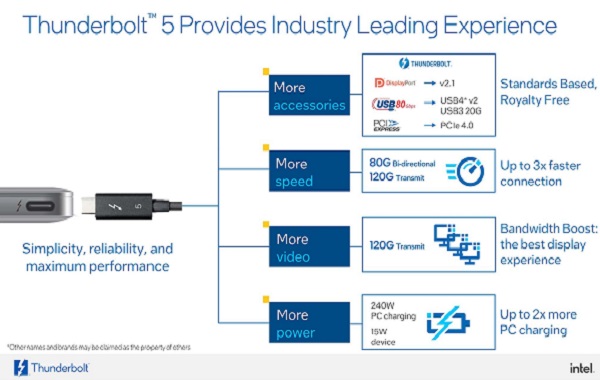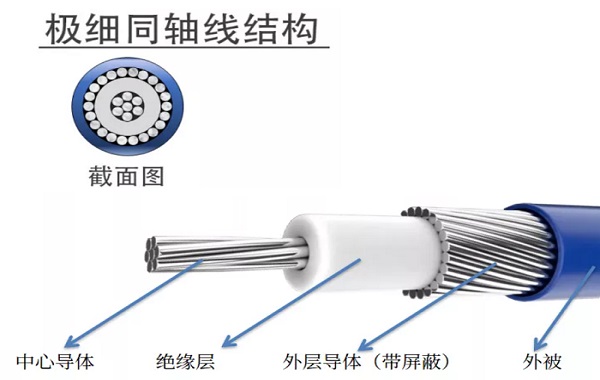Categorization:Harness Component

Thunderbolt technology's high requirements for cables arise from its unique combination of high-speed features and protocols:
1.1 The bandwidth requirement is extremely high. Thunderbolt 3/4 can reach up to 40Gbps, while Thunderbolt 5 even elevates to the highest 80Gbps, which belongs to the typical category of ultra-high-speed differential signals.
1.2 Protocol Overlay. Thunderbolt simultaneously carries PCIe, USB, and DisplayPort video signals, demanding high requirements for signal integrity and anti-interference capability.
1.3 Long-distance transmission requirements. Users hope to maintain high speed even over distances of 0.5 to 2 meters and even longer, requiring cables with extremely low attenuation and high stability.
High-speed, multi-protocol, and long-distance put unprecedented challenges on the physical structure of Thunderbolt cables.

In interfaces such as USB, HDMI, and others, the twisted pair is the mainstream structure, but at levels of 20Gbps to 80Gbps, its limitations begin to appear:
2.1 High frequency insertion loss significantly increases, signal is prone to attenuation.
2.2 The impedance is difficult to control consistently, the lay length is unstable, which is prone to reflections.
2.3 Insufficient shielding performance, difficult to meet interference requirements under parallel multi-protocol operations.
2.4 Increasing the wire diameter is necessary to ensure performance, which is不利于flexible wiring and structural miniaturization.
Therefore, in ultra-high-speed systems like Thunderbolt, twisted pair cables can no longer meet the multiple requirements of loss, impedance, shielding, and flexibility simultaneously.

The core reason why ultra-fine coaxial cable束 becomes the core of Thunderbolt.
Thunderbolt cables extensively use micro coaxial structures to achieve superior performance in high-speed transmission:3.1 Impedance control is accurate. The coaxial design can strictly control 85Ω / 90Ω impedance, reducing high-speed reflection issues.
Low insertion loss. Even at frequencies above 10GHz, extremely thin coaxial cables still maintain stable performance, suitable for long-distance high-speed transmission.
3.3 Strong shielding capability. 360° omni-directional shielding effectively reduces external EMI interference and also avoids internal crosstalk, which is very critical for multi-protocol Thunderbolt.
Soft, small, and easy to route. The diameter is only 0.3mm to 0.6mm, making the cable flexible and lightweight, very suitable for high-density and narrow structures.
3.5 High reliability and scalability. By combining multiple coaxial cable bundles, it can meet different versions, lengths, and application requirements.Therefore, it can be said that the extremely fine coaxial cable bundle is the best physical medium for Thunderbolt's high-speed stable transmission.

Four, typical application scenarios
4.1 Thunderbolt 3/4 active cable: Utilizes extremely thin coaxial cables to reduce attenuation, and combines with a retiming chip to achieve long-distance high-speed connections.
4.2 Thunderbolt 5 high-speed cable: The 80Gbps bandwidth requires higher cable requirements, and currently, almost all use micro coaxial structure to meet performance limitations.It can be said that without the ultra-fine coaxial cable束, it is impossible to achieve true Thunderbolt ultra-high-speed interconnection.

I amSuzhou Huichengyuan Electronic Technology Co., Ltd.,Long-term focus on the design and customization of high-speed signal cable harnesses and ultra-fine coaxial cable harnesses, committed to providing stable and reliable high-speed interconnection solutions. If you have related needs or want to learn more, please contact:Manager Yin 18913280527 (WeChat same number)。